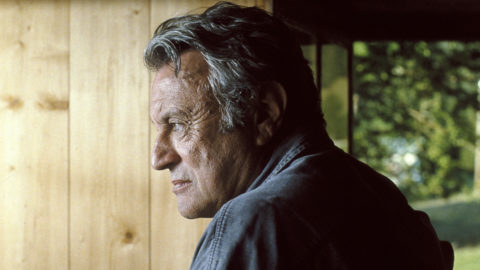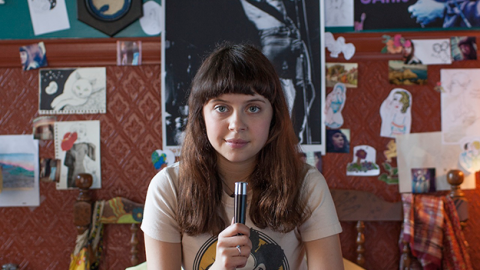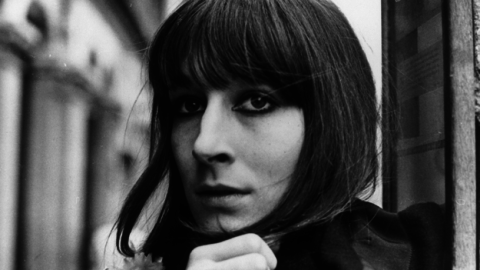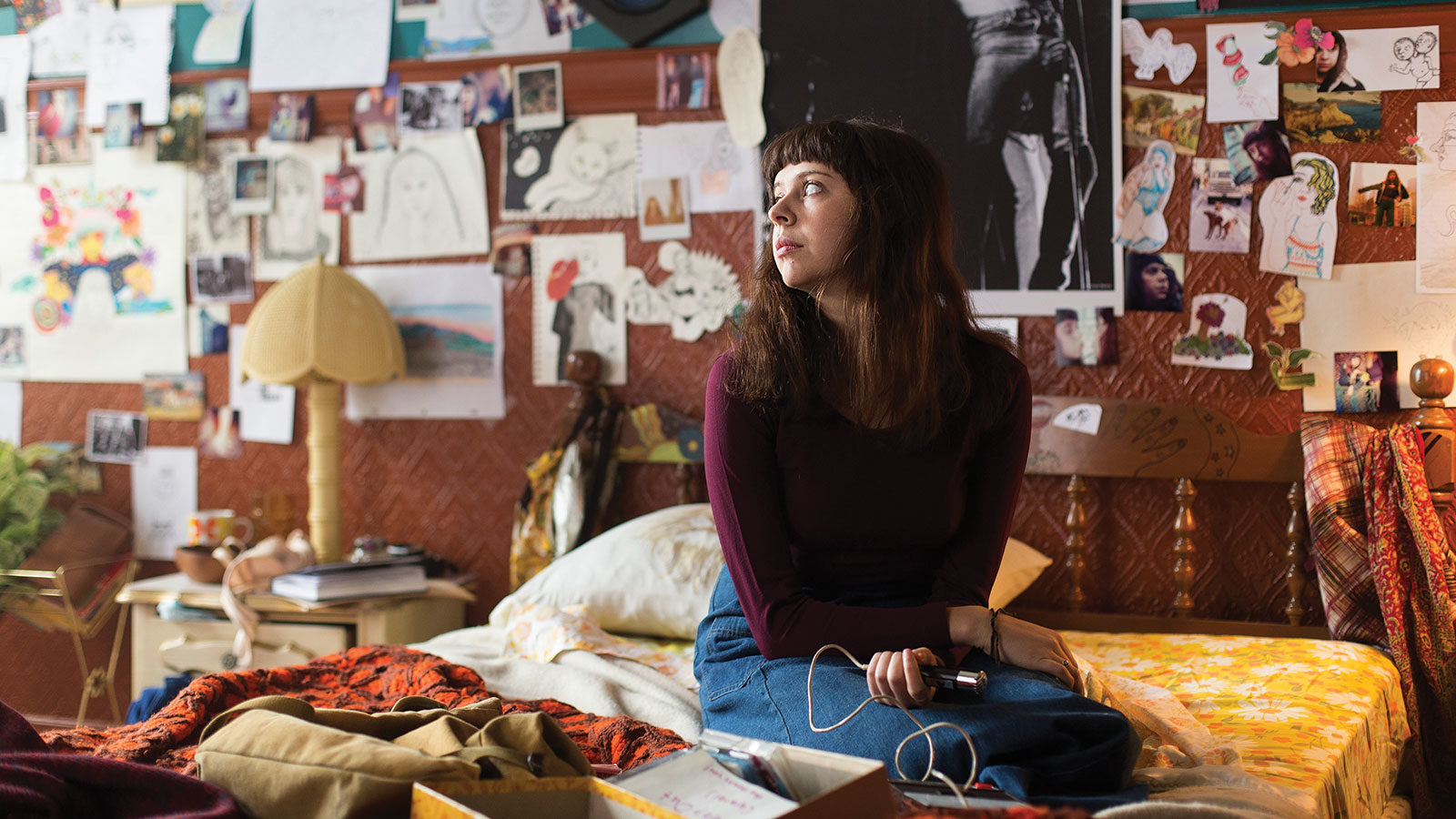
Like a Hurricane
Perhaps I’m being overprotective of a movie that I adore, Marielle Heller’s The Diary of a Teenage Girl, but I got riled up after seeing the trailer, which takes the single misstep Heller made—sappy, psychedelic animations of birds and flowers that are supposed to represent the fantasies of Minnie Goetze, the most forthrightly lewd and courageously sexual, adolescent female protagonist ever beheld in an American movie—and makes it seem as if they convey the tone of the entire shebang. It’s easy enough when watching the movie itself to dismiss the cliché of girlish innocence in those animations, which are dropped in for just a few seconds here and there, or view them with a certain irony, as if Minnie is as surprised as we are to find such uncool art cluttering up her psyche, or write them off as Heller’s attempt to make use of visuals that are completely different in style from those in Phoebe Gloeckner’s tough-to-the-core prose/graphic hybrid novel of the same name. Unlike Heller’s adaptation, which does justice to Gloeckner’s vision in every other respect, the trailer made me suspect that the distribution/exhibition complex might even be trying to fool potential audiences into thinking that The Diary of a Teenage Girl is safely sentimental rather than the tornado of teenage female libido that Heller, inspired by Gloeckner and with the invaluable collaboration of the movie’s star, Bel Powley, has created.
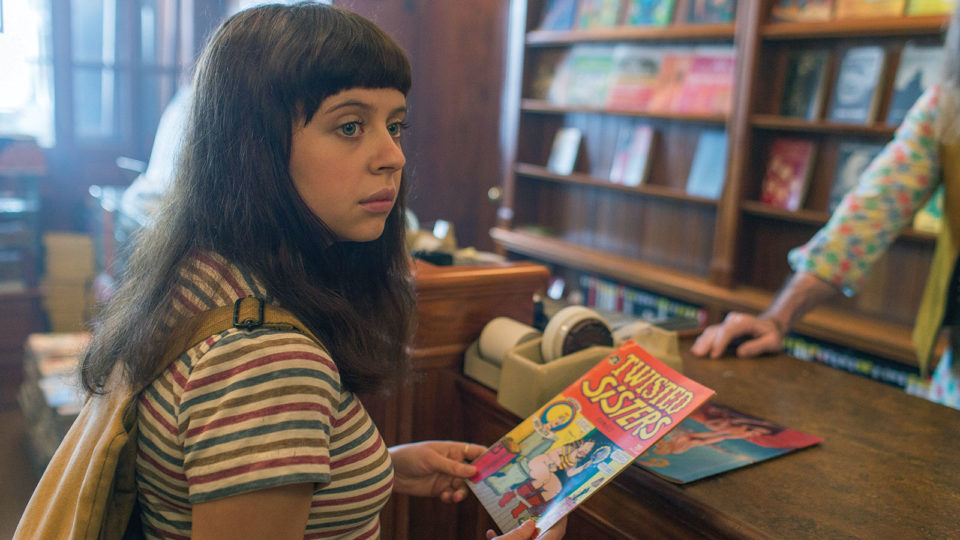
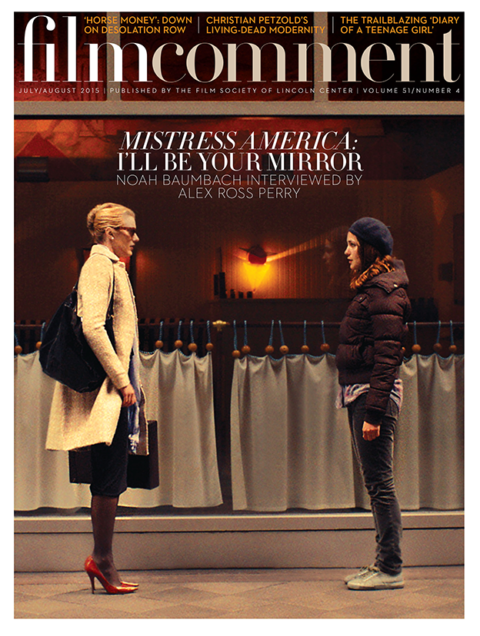
Have I been unnecessarily convoluted? Here’s a direct and simple anecdote: I teach a film and feminism course at New York’s School of Visual Arts. I always show Catherine Breillat’s Fat Girl or 36 Fillette, which every year prompts some students to inquire if there are any movies without subtitles that nail adolescent female sexuality without exploiting it. I can now point to the revelatory and revolutionary The Diary of a Teenage Girl.
Set in San Francisco in the mid-Seventies, the movie is couched in the first-person voice of the smart, talented, sex-obsessed 15-year-old Minnie (Powley), who lives with her mother (Kristen Wiig) and younger sister (Abby Wait) in a sprawling apartment overflowing with Victorian furniture and post-hippie bric-a-brac and with lots of doorways that are useful for eavesdropping on the private conversations of others, as Minnie often does when her 32-year-old mother is hanging out with her 35-year-old boyfriend, Monroe (Alexander Skarsgård)—who is also Minnie’s secret lover. “I had sex for the first time today. Holy shit!” says Minnie, by way of introducing herself to us. It’s the gonzo opening line of both the film and the diary that she keeps on an audiocassette recorder, stashed none too carefully in her bedroom, because as the interloper in a sexual triangle, she unconsciously wants to be found out by the woman with whom she’s in competition: her beautiful, narcissistic, alcohol-addled mom, who is so oblivious to her daughter’s needs and desires that it takes her nearly a year to discover what’s going on.
This description might bring to mind Stanley Kubrick’s adaptation of Vladimir Nabokov’s Lolita, in which the “nymphet” is some five years older than in the novel, and as played by Sue Lyon, has much in common, despite her blonde all-American beauty, with the ironic attitude and the brash yet vulnerable demeanor of Minnie in both film and book. The huge difference between the two novels and the two films is that the point of view (the first-person narration) in Nabokov and Kubrick is male (belonging to Humbert Humbert), which means that Lolita is always and only an object of his desire, whereas The Diary of a Teenage Girl is Minnie’s story as she knows it from her own experience of coming of age. And Minnie is far more generous in her assessment of the crucial people in her life than is Humbert. The misogyny in Nabokov and Kubrick’s Lolita has less to do with a man’s affair with an underage girl than with his hatred and disgust for her middle-aged mother. Minnie has her moments of hating her mom and Monroe, but in the end she makes no moral judgments—she simply moves on, knowing that she’s outgrown them both. (As proof that my comparison between both Gloeckner and Heller’s The Diary of a Teenage Girl and those masterpieces of perverse patriarchal desire, Lolita the film and the novel, is not off the wall, I offer the fact that whereas in Gloeckner’s novel, Minnie’s mother is referred to only as “Mom,” in Heller’s film, she is “Mom” to her daughters and Charlotte to everyone else—Charlotte being the name of Lolita’s mother on the page and on the screen.)
Thus when a guy during a post-screening Q&A at Sundance began by labeling The Diary of a Teenage Girl a story about pedophilia, many in the audience responded with laughter. The film is Minnie’s story—the story of her relationship with her mother and her mother’s boyfriend. It is Minnie who boldly initiates her affair with Monroe. She’s not a victim, although she confuses her own desire for sex and what she imagines is the freedom of an adult with her desire to be desired and the power that the desire of another bestows on her. The miracle of The Diary of a Teenage Girl is that it follows Minnie into the intoxicating highs and devastating lows of that confusion, from which she emerges with some sense of who she is and who she might want to become. Because Minnie’s confusion is not merely a function of her youth, it’s easy to imagine that this won’t be the last time in her life that she will be overwhelmed by this conundrum of desire that is patriarchy’s most powerful device for keeping women in check, and that is why, regardless of age, we see ourselves in The Diary of a Teenage Girl.
Gloeckner’s hybrid novel—more prose than graphics—was published in 2002 and developed from her more sexually explicit 1998 collection of graphic short fiction, a child’s life and other stories, that introduced the character of Minnie. Although both books contain many autobiographical elements, they are inventions and were part of the post-punk grrrl-power moment, which made its presence known in music and literature, but sadly not very much in movies. Sadie Benning’s videos are an exception; her 50-minute feature Flat Is Beautiful, from 1999, bears a resemblance to a child’s life, the strongest connection being the influence of the graphic narrative artist Aline Kominsky (Minnie’s idol and inspiration) on both Gloeckner and Benning. Gloeckner, who was in her mid-thirties when The Diary of a Teenage Girl came out, says that there wasn’t much interest at the time in a screen adaptation, although she recalls a meeting in which a guy, ridiculously, proposed a “happy ending” in which Monroe marries Minnie. In the novel and in Heller’s movie, Minnie’s mom and Monroe drunkenly propose exactly that solution, which causes Minnie to run away and take refuge in a heroin den, the only moment when one fears that she might not survive.
Gloeckner has two daughters and teaches at the University of Michigan’s School of Art and Design. For over a decade she has been visiting Juárez, attempting to make a mixed-media work about the women who live and die there. For anyone concerned about the morality of representation in general, and with a defense against the self-appointed morals squads that at some point will inevitably attack Heller’s movie, I suggest that they go to Gloeckner’s website, www.ravenblond.com, and read her blog entries about the Juárez project.
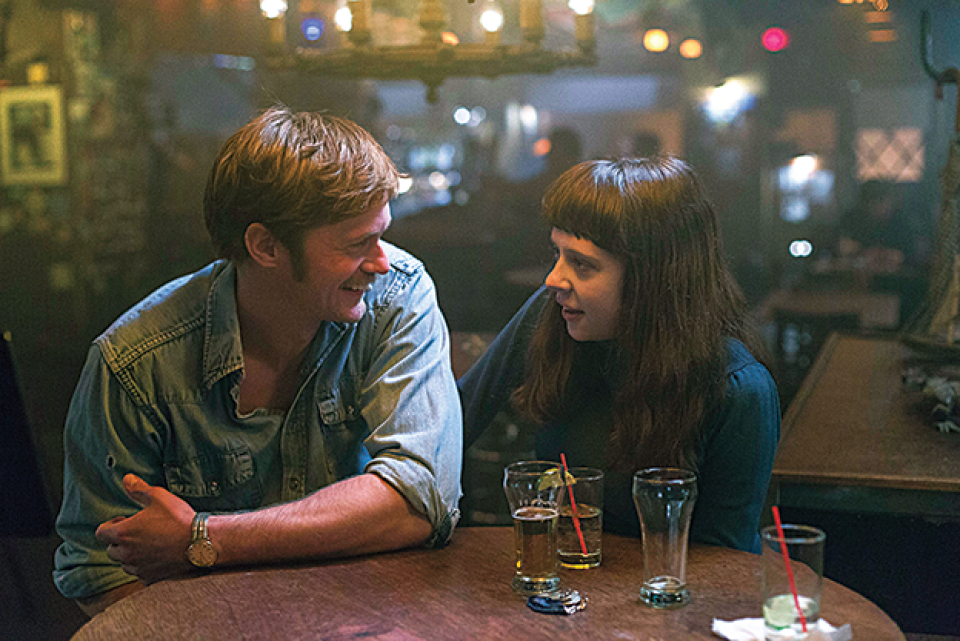
Heller, an actress and fledgling director, now roughly the same age as Gloeckner was when she wrote The Diary of a Teenage Girl, fell in love with Minnie when she read the novel eight years ago. Because she looked much younger than her age, she had been playing adolescent roles in movies, but Minnie, she says, was the first character she had encountered that seemed like an actual teen girl. She got Gloeckner’s permission to adapt her book into a multimedia stage work in which she played Minnie. It ran for several months in 2010 at a small Off-Off-Broadway theater. Producer Anne Carey suggested that Heller apply to the Sundance Labs in 2012 in order to turn the stage piece into a movie. Heller credits the Labs, and particularly Nicole Holofcener, with encouraging her to go as far as she could and not to sugarcoat Minnie’s sexuality. (I’ll never call out the Labs for being “too granola” again.)
Shot nonintrusively but with great confidence by Brandon Trost, and with production design by Jonah Markowitz that is accurate to San Francisco in 1975 without screaming “period” at you, The Diary of a Teenage Girl is an actors’ film. Wiig and Skarsgård capture the go-with-the-flow irresponsibility of the adults in Minnie’s life. Neither of them means her any harm, and Monroe might even, for a moment, be in love with Minnie—which is partly why she rejects him in the end. Heller’s direction allows a lot of subtext to make itself felt on the screen. And Powley, a 22-year-old English stage and TV actor with a mobile, slightly cartoony face, defiant stride, and mercurial emotions, finds the humor as well as the angst in Minnie’s position at the apex of a triangle with her mom and Monroe.
“What I want most for the film,” said Gloeckner when I interviewed her, “is that teenage girls have a chance to see it.”



